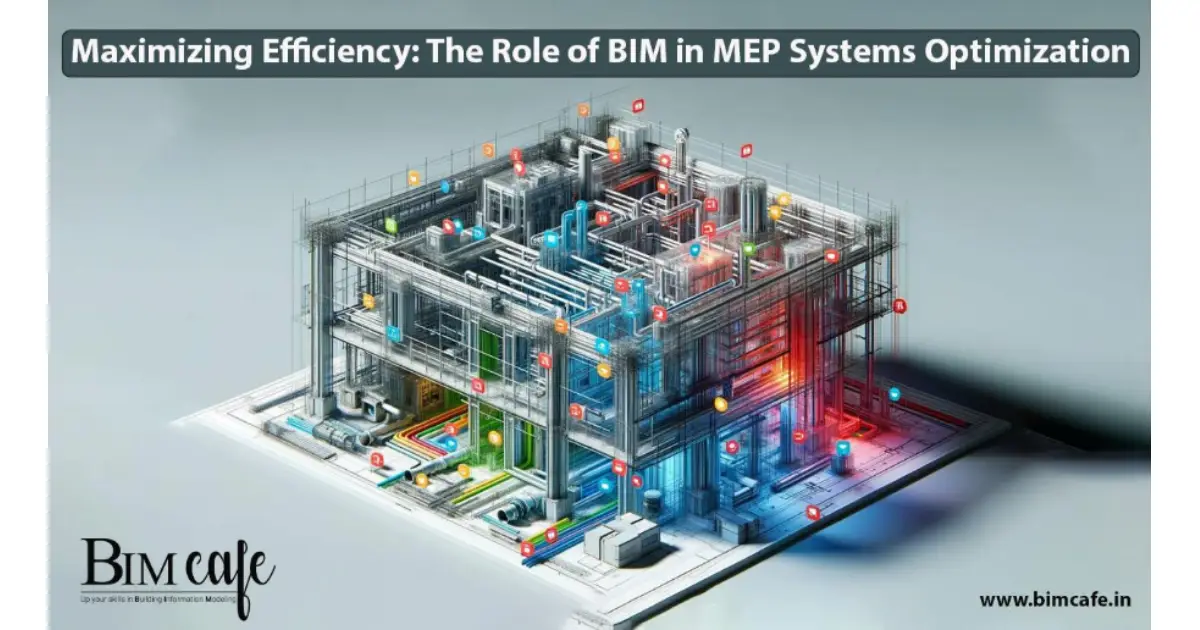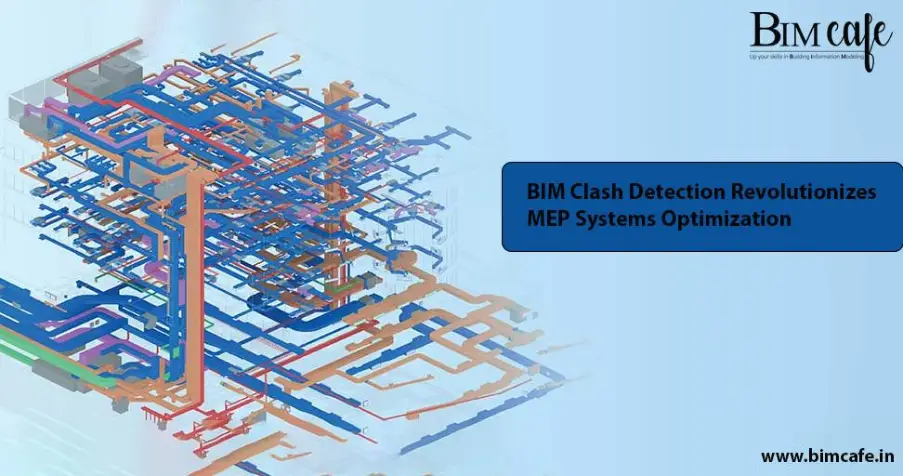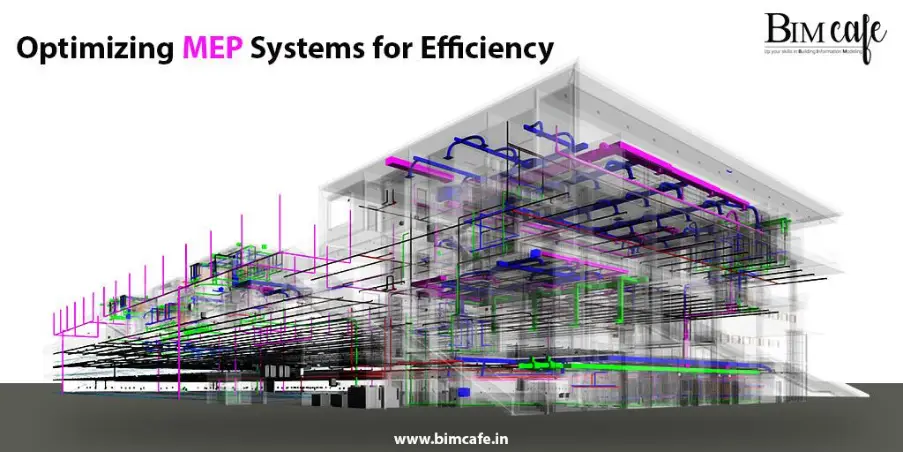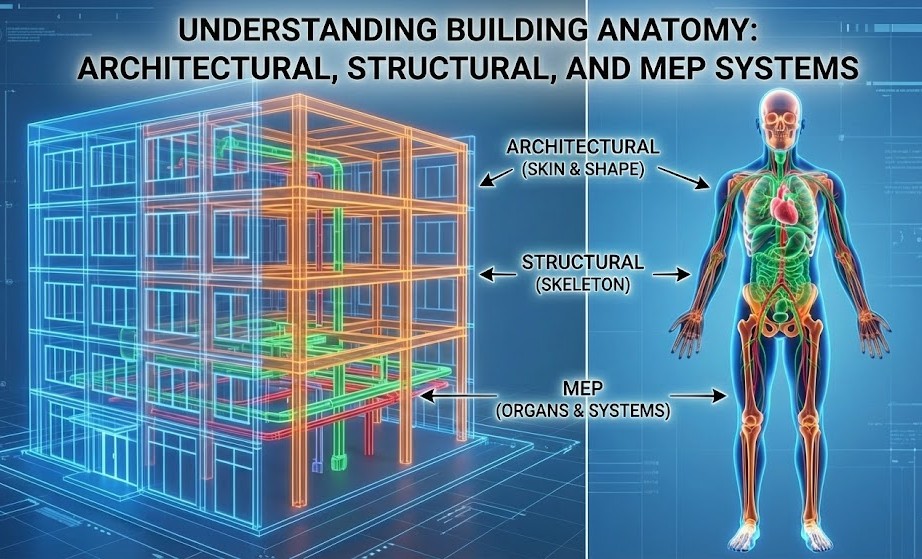
Author: Devika R
February 7, 2024
3 min read
In the intricate world of construction and building design, efficiency is paramount. Any improvement in efficiency not only translates to cost savings but also enhances overall project success. One area where efficiency plays a crucial role is in Mechanical, Electrical, and Plumbing (MEP) systems optimization. In recent years, Building Information Modeling (BIM) has emerged as a game-changer in this regard, revolutionizing the way MEP systems are designed, analyzed, and implemented.
BIM, a sophisticated process of creating and managing digital representations of physical and functional characteristics of buildings, has brought about a paradigm shift in MEP systems optimization. Gone are the days of relying solely on 2D drawings and fragmented data. With BIM, MEP engineers and designers can collaborate seamlessly on a single, integrated platform, leading to enhanced efficiency at every stage of the project lifecycle.
BIM’s Clash Detection Revolutionizes MEP Systems Optimization

One of the primary contributions of BIM to MEP systems optimization lies in its ability to facilitate comprehensive coordination and clash detection. MEP systems are often complex and intricate, with various components needing to seamlessly integrate within the building structure. BIM allows for the creation of detailed 3D models that accurately depict MEP systems, enabling engineers to identify clashes and conflicts early in the design phase. This early detection not only saves time but also prevents costly rework during construction.
Maximizing Efficiency Through Real-Time Collaboration

Furthermore, BIM enables real-time collaboration among multidisciplinary teams, including architects, engineers, contractors, and subcontractors. This collaborative approach ensures that all stakeholders have access to the latest information, fostering better decision-making and minimizing errors. By streamlining communication and coordination, BIM reduces the likelihood of delays and disruptions, ultimately maximizing project efficiency.
Optimizing MEP Systems for Efficiency

Another key aspect of BIM in MEP systems optimization is its role in simulation and analysis. BIM software allows engineers to simulate various scenarios and evaluate the performance of MEP systems under different conditions. Whether it’s assessing energy efficiency, analyzing airflow patterns, or optimizing lighting design, BIM provides valuable insights that enable engineers to make informed decisions that enhance overall system efficiency.
Moreover, BIM supports the integration of sustainability principles into MEP design. By incorporating energy modeling and analysis tools, engineers can optimize MEP systems for maximum efficiency while minimizing environmental impact. This includes the selection of energy-efficient equipment, the implementation of renewable energy sources, and the design of efficient HVAC and lighting systems.
In conclusion, Building Information Modeling (BIM) has become an indispensable tool in maximizing efficiency in MEP systems optimization. By facilitating comprehensive coordination, enabling real-time collaboration, supporting simulation and analysis, and promoting sustainability, BIM enhances every aspect of MEP design and implementation. As the construction industry continues to evolve, BIM will undoubtedly play a central role in driving efficiency and innovation in MEP systems optimization.





